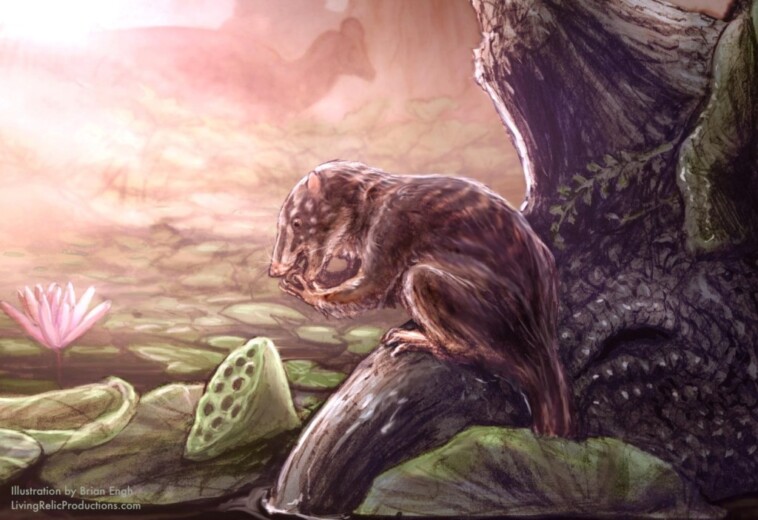The fossilized remains of a nearly 75-million-year-old “swamp dweller” have been discovered by paleontologists in northwest Colorado.
The University of Colorado team behind the discovery has been digging just outside of Rangely, Colorado for 15 years and recently unearthed one of their biggest, and strangest, findings yet — the jaw of a Heleocola piceanus, or “vertebrate swamp dweller”.
The swamp dweller looks just like what the name would suggest. It was a very rodent-like marsupial, just about the size of a muskrat, that weighed up to two pounds. However, this size was actually relatively large compared to most Cretaceous period mammals.
“They’re not all tiny,” Professor Jaelyn Eberle, curator of fossil vertebrates at the CU Museum of Natural History, told the CU Boulder Today.
“There are a few animals emerging from the Late Cretaceous that are bigger than what we anticipated 20 years ago.”
Before an asteroid wiped out nearly all non-avian animals 66 million years ago, mammals typically fell on the smaller side, usually with similar statures to modern day rats and mice, Eberle said. Because of that, many are largely identified through fossilized teeth.
70 million years ago, Colorado was nothing more than the inland sea, with the land surrounding it comprised of mainly marshes and swamp land. The fossil itself was found where the land and sea would’ve met back then.
The only inhabitants in the area, besides the swamp dweller, would’ve likely included traditional marsh creatures like turtles and massive crocodiles.
“The region might have looked kind of like Louisiana,” Rebecca Hunt-Foster, the study’s co-author, told the CU Boulder Today.
“We see a lot of animals that were living in the water quite happily like sharks, rays and guitarfish.”
The discovery team celebrated going off the beaten path and sticking to excavating in western Colorado for as long as they have.
“It’s a small town, but, in my experience as a paleontologist, a lot of cool things come out of rural environments,” Eberle told the CU Boulder Today. “It’s nice to see western Colorado have an exciting discovery.”
“We have scientists that come from all over the world specifically to study our fossils. We really are lucky.”






